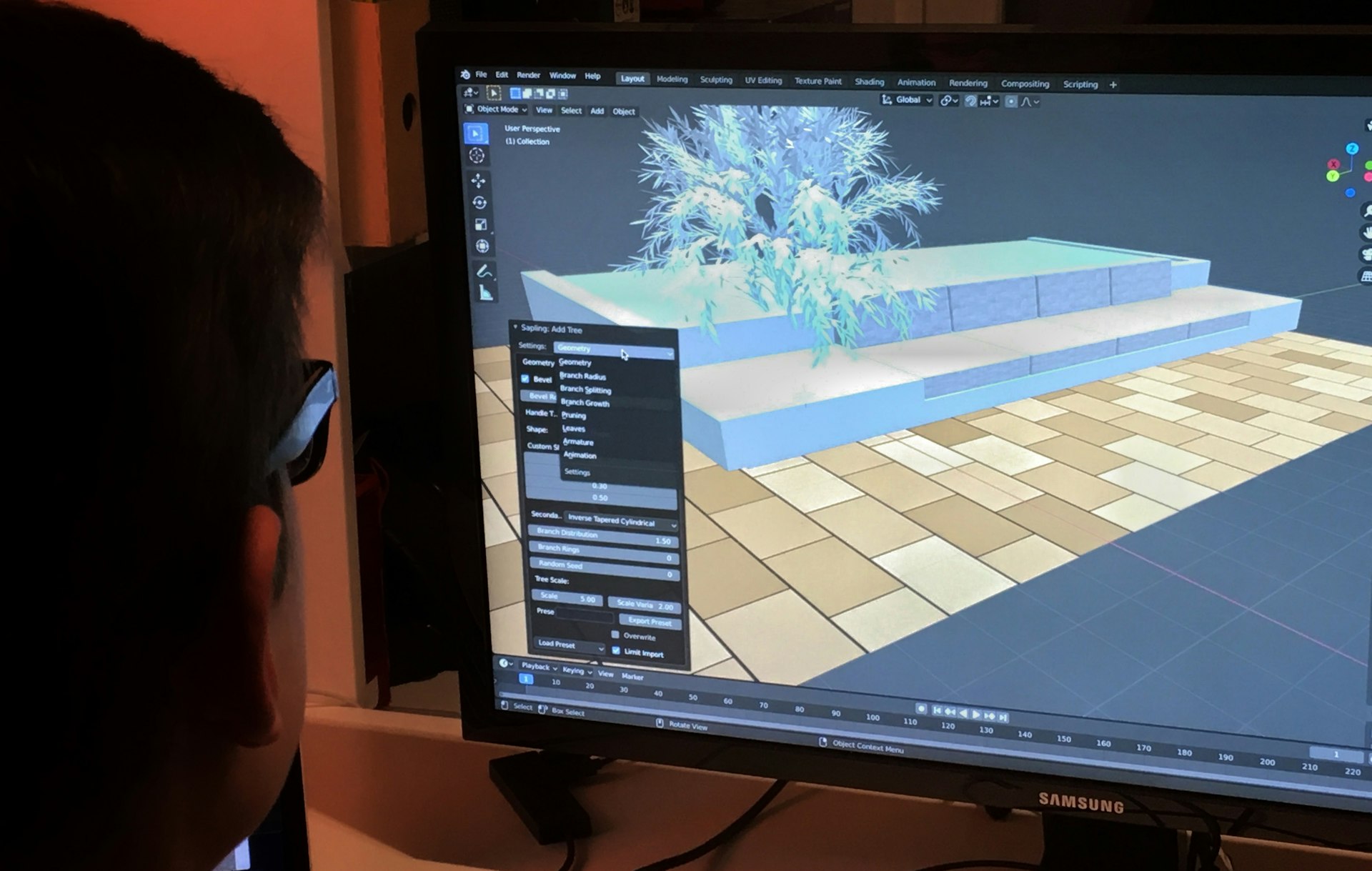Navigating the Next Frontier: The Future of Social VR Gaming Spaces

Photo by Amanz on Unsplash
Introduction: A New Era for Social VR Gaming Spaces
Social VR gaming spaces are rapidly reshaping how individuals connect, play, and create in digital realms. As technological advances accelerate and user expectations grow, these platforms are evolving from niche communities into mainstream social hubs. By 2025, the convergence of hyper-realistic graphics, artificial intelligence (AI), accessible hardware, and innovative economic models is defining the future of social VR gaming, making it more immersive and interactive than ever before [1] , [2] , [3] .
1. Hyper-Realistic Environments: Redefining Immersion
One of the most significant innovations in social VR gaming is the development of hyper-realistic virtual environments. Leveraging AI-driven rendering and advanced graphics engines, developers can now create worlds with intricate details, dynamic lighting, and tactile feedback that closely mimic real life. Players experience not just visual fidelity, but also simulated physical sensations like touch, temperature, and even scent in some experimental setups [1] , [3] .
For example, platforms such as VRChat and Rec Room have introduced customizable social spaces where users can interact, attend virtual concerts, and participate in group activities. The result is a heightened sense of presence, blurring the distinction between digital and physical interactions. This level of immersion enhances user engagement and emotional connection within virtual communities.
Steps to Access These Experiences: To explore hyper-realistic social VR spaces, you can download leading VR platforms such as VRChat, Rec Room, or Horizon Worlds from official VR app stores. Ensure your VR hardware meets the recommended specifications for optimal performance and realism. Consider updating your device firmware and graphics drivers to support the latest features.
2. AI Integration and Personalized Social Experiences
AI is transforming social VR gaming by powering adaptive narratives, intelligent non-player characters (NPCs), and personalized environments. AI-driven avatars and characters can respond to player behavior, tailoring conversations and activities to each individual’s preferences [1] . This creates dynamic, ever-evolving social experiences that keep players engaged over the long term.
AI is also being used to moderate interactions, filter inappropriate content, and foster safe, inclusive communities. Some platforms offer AI-based matchmaking to connect users with similar interests or compatible play styles, enhancing the quality of social interactions.
How to Participate: To experience AI-enhanced social VR, look for games and platforms that advertise adaptive AI features. Engage in community forums and user groups to learn which spaces are most active and supportive. If you encounter issues or inappropriate content, most platforms have built-in reporting tools and community moderation teams you can contact for assistance.
3. Community Building and Social Interaction
The shift from solitary gaming to community-oriented social VR is one of the most prominent trends of 2025. Social VR spaces now offer a variety of collaborative activities including multiplayer games, virtual parties, educational workshops, and large-scale events like digital concerts or conferences [3] , [5] . These spaces act as digital third places, fostering real friendships and networks beyond geographical limitations.
Platforms are focusing on inclusivity and accessibility, with user-friendly interfaces and customizable avatars that reflect diverse identities. This enables users of different backgrounds and abilities to participate fully in the virtual community.
Getting Involved: To join these communities, create an account on your chosen platform, customize your avatar, and join public rooms or events. Many platforms provide onboarding tutorials and help centers for new users. Explore event calendars to find activities that match your interests.

Photo by Dat Do on Unsplash
4. Economic Models: Play-to-Earn, Asset Ownership, and Subscription Services
Economic innovation is at the heart of social VR gaming’s future. The play-to-earn model allows players to earn real-world value through in-game achievements, event participation, and content creation. Many platforms now integrate blockchain and token systems, enabling players to own, trade, and sell digital assets that can appreciate over time [2] .
Additionally, subscription-based services are making VR gaming more accessible, offering users access to vast libraries of games for a monthly or yearly fee. This model, popularized by services like Xbox Game Pass and PlayStation Plus in traditional gaming, is now being adopted for AR/VR titles as well [4] . Subscriptions lower the barrier to entry for new users and encourage exploration of diverse experiences.
How to Access Economic Opportunities: To participate in play-to-earn or asset ownership models, register for platforms that support blockchain integration and offer digital marketplaces. Always use secure wallets and review platform guidelines before making purchases or trades. For subscription services, check your VR hardware’s official store or website for current offers and eligibility requirements.
5. Technological Advancements: Hardware, Cloud Gaming, and Accessibility
Hardware improvements are making social VR gaming more comfortable and affordable. Modern wireless headsets are lighter, with higher resolution displays and improved tracking, reducing motion sickness and fatigue. Haptic feedback suits and gloves offer tactile immersion, allowing users to “feel” virtual objects and environments [5] .
Cloud gaming is also revolutionizing access to VR. By offloading processing to remote servers, users can enjoy high-quality experiences on less powerful devices, breaking down the traditional cost barrier. Subscription and cloud services together are making VR gaming available to a broader audience worldwide.
Implementation Steps: To benefit from these advancements, research the latest hardware options compatible with your needs and budget. Explore cloud gaming solutions offered by major technology companies, and ensure your internet connection meets the platform’s minimum requirements. Review community recommendations and technical support resources before making significant purchases.
6. Overcoming Challenges and Ensuring Safety
Despite progress, social VR gaming faces challenges such as online harassment, privacy concerns, and digital fatigue. Leading platforms are prioritizing user safety through robust moderation systems, privacy controls, and educational campaigns. Many also collaborate with external organizations to develop best practices for digital well-being [3] .
Practical Guidance: Protect your privacy by regularly updating your account security settings and limiting personal information shared online. Take breaks to avoid fatigue, and leverage built-in wellness features such as screen time reminders. If you encounter harassment or inappropriate behavior, use the platform’s reporting tools and consult help centers for support.
7. Alternative Pathways and Future Opportunities
The future of social VR gaming spaces is dynamic and multifaceted. For those interested in developing content or hosting events, many platforms provide developer toolkits, event hosting guides, and creator funding programs. Educational institutions and organizations are increasingly using VR for training and collaboration, offering new opportunities for professional growth [3] .
How to Get Started: To access these opportunities, search for official developer or creator programs on the platform of your choice. Join online forums and professional groups to share knowledge and learn about upcoming grants or competitions. Consider reaching out to the platform’s support team for detailed guidance on getting involved as a creator or event organizer.
References
- [1] EuphoriaXR (2025). Virtual Reality Trends of 2025: A Deeper Look At What Is Recasting The Future.
- [2] Outer Edge (2025). Explore Web3 Gaming and Entertainment Trends for 2025.
- [3] Program-Ace (2025). Top 5 Virtual Reality Trends of 2025 – The Future of VR.
- [4] Calibraint (2025). Top AR/VR Gaming Trends to Watch in 2025 and Beyond.
- [5] G Fuel (2025). The Future of Gaming 2025: Tech Trends & Performance.
MORE FROM zestpath.net













